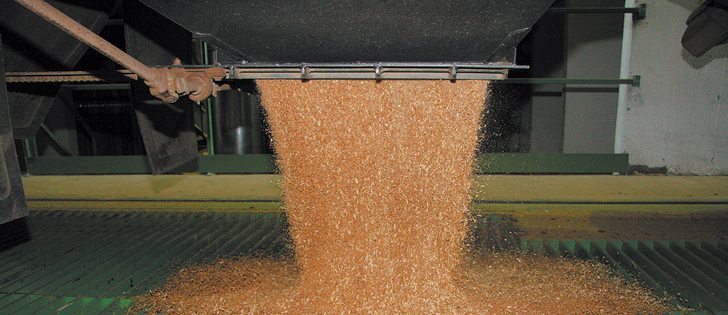Corn, soy prices fall | Lower global wheat ending stocks estimate helps lift wheat
The markets were fed moderately tasty bull feed with the U.S. Department of Agriculture’s Oct. 10 report, but a bear came out and ate it.
That’s how some analysts looked at the United States Department of Agriculture World Agricultural Supply and Demand Estimates.
The report posted U.S. production numbers and ending stocks that were seen as slightly bullish.
Analysts had predicted slightly higher U.S. corn and soybean production than the USDA found. They had not generally expected the world wheat ending stocks number to drop by four million tonnes.
Read Also

Flax sector sees omega-3 opportunity
SASKATOON — A global shortage of omega-3 oils could be an opportunity for the flax sector, says an industry official….
Yet corn and soybeans fell sharply following an initial rally after the report’s release, which undermined the market’s confidence before the report, when corn had risen for seven consecutive sessions.
“In my mind it’ll resume the downtrend,” said Errol Anderson of Pro Market Communications.
“We’ll test those lows and see how many buyers step in.”
Anderson expects December corn futures to test $3.20 and November soybeans to hit the $9 level.
Many were surprised that the USDA reduced 2014-15 world wheat ending stocks to 192 million from 196 million tonnes. However, after an initial price rally, wheat had trouble holding on to any gains the day the report was released, with spring wheat futures ending almost flat on the December contract and down a couple of cents for March.
Chicago and Kansas City winter wheat contracts closed up only five cents or less.
Many in the markets are wondering if crops have posted harvest lows and are beginning a bounce back.
However, Ken Ball of P.I. Financial thinks the weak response to neutral or bullish news in the USDA report suggests lower prices are still possible.
“The numbers came in very close to expectations, but there was an expectation that some monster numbers might just pop up, and they didn’t,” said Ball.
Soybean futures often hit a bottom in the first week of October, but that hasn’t always been a “final bottom” in recent years, Ball said. It can occur later if the USDA keeps increasing U.S. crop production numbers into January.
Also, South America is expecting huge soybeans crops and that provides the potential for another bearish factor in if production goes well there.
The U.S. almost ran out of soybeans at the end of the 2013-14 crop year, but there is a chance this crop year that stockpiles will be gigantic once the South American crop is harvested at the end of winter.
“If that happens, the bean supply situation is going to get almost out of control,” said Ball.
















